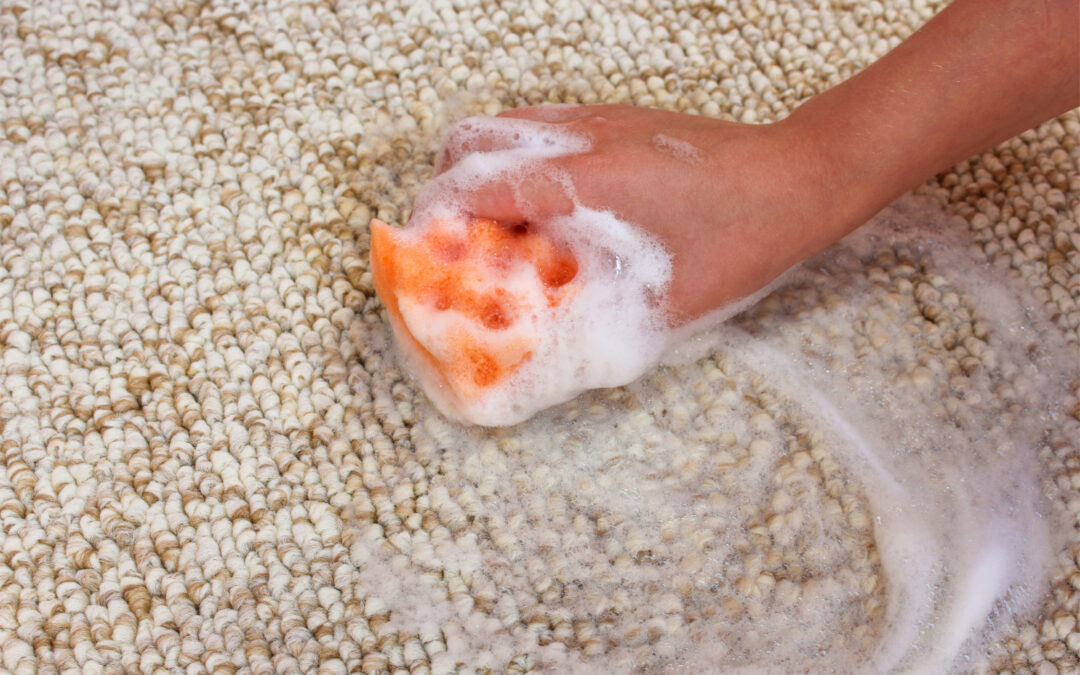Pet owners know that accidents can happen, no matter how well-trained their furry friends might be. One of the most challenging spills to deal with is pet urine. Not only does it leave an unsightly stain, but it can also produce a lingering odour that makes your home less pleasant. The problem worsens when the stains are not addressed promptly, as pet urine can seep into carpets, upholstery, and even flooring, making it difficult to remove entirely.
Removing pet urine stains is not just about appearances; it’s also about maintaining a healthy and hygienic living space. Urine can contribute to an unsanitary environment, potentially leading to health risks for both humans and pets. Understanding how to effectively clean these stains and prevent future accidents is crucial for keeping your home fresh and clean.
Walter DaCosta, owner of Elite Carpet Care, states, “Properly addressing pet urine stains as soon as they occur is essential for maintaining both the aesthetic and health standards of your home environment.” In this guide, you’ll learn why these stains are so tough to remove, what tools and ingredients you need, and detailed steps to tackle fresh and old stains. Additionally, we will provide preventive measures to help avoid future incidents, ensuring your home stays clean and odour-free.
Why Pet Urine Stains Are Challenging to Remove
Pet urine stains are notoriously tough to eliminate due to their unique composition. Urine contains uric acid, forming crystals that embed into fibres and surfaces. These uric acid crystals are highly resilient and not easily dissolved by regular cleaning solutions. Furthermore, as the urine breaks down, it releases ammonia, which can lead to an even stronger and more unpleasant odour.
The longer a urine stain sits, the harder it becomes to remove. Over time, pet urine can seep into carpets’ underpadding and upholstery fibres, creating stubborn stains. The moisture also promotes the growth of bacteria, exacerbating the smell and making the stain more challenging to treat. Walter DaCosta points out, “Acting quickly is key to preventing urine from becoming a permanent and smelly fixture in your home.”
Another complication arises when pets return to the same spot if the odour isn’t completely eliminated. This can make recurring accidents a persistent issue, further complicating cleaning efforts. Therefore, thorough and effective treatment of pet urine stains is critical for a clean home environment.
Essential Tools and Ingredients for Pet Urine Stain Removal
You need the right tools and ingredients to tackle pet urine stains effectively. Here’s a list of essentials:
- Paper Towels: These are used to blot up the urine as soon as the accident occurs.
- White Vinegar: A natural disinfectant that helps neutralize odours.
- Baking Soda: Excellent for absorbing moisture and odours.
- Enzyme Cleaner: Enzyme-based cleaners break down uric acid crystals, making them easier to remove.
- Spray Bottle: This is used to apply cleaning solutions evenly.
- Microfibre Cloths: For blotting and scrubbing stains without damaging surfaces.
- Wet/Dry Vacuum: Helps to extract liquid from carpets and upholstery efficiently.
These tools and ingredients ensure you are prepared to address urine stains quickly and effectively. With the right approach, you can greatly reduce the impact of pet accidents on your home.
Step-by-Step Process for Removing Fresh and Set-In Pet Urine Stains
Cleaning pet urine stains promptly and correctly can prevent long-term damage. Here’s a comprehensive step-by-step guide for removing both fresh and set-in stains:
- Blot the Fresh Stain: Use paper towels to blot up as much urine as possible. Apply pressure to absorb the liquid without spreading it further.
- Apply Vinegar Solution: Mix equal parts white vinegar and water in a spray bottle. Spray the solution generously on the stained area. The vinegar helps neutralize the ammonia in the urine.
- Blot Again: Use clean microfibre cloths to blot the area again, soaking up the vinegar solution and the broken-down urine.
- Sprinkle Baking Soda: Cover the entire affected area with a layer of baking soda. This will help absorb moisture and neutralize any remaining odour.
- Apply Enzyme Cleaner: Spray an enzyme cleaner on the baking soda-covered stain. Enzymes break down the uric acid, helping to eliminate both the stain and the odour effectively. Allow the cleaner to sit and work for at least 10-15 minutes or as per the product instructions.
- Blot and Vacuum: Blot the area again with clean cloths, then use a wet/dry vacuum to extract any remaining moisture. Make sure the area is thoroughly dried.
For set-in stains:
- Rehydrate the Area: Apply a mixture of warm water and vinegar to rehydrate the old stain, making it easier to clean.
- Repeat the Above Steps: Follow the same steps as for fresh stains, ensuring you allow extra time for the enzyme cleaner to break down the older deposits.
Preventive Measures to Avoid Future Pet Urine Stains
Preventing future pet urine stains involves a mix of training, maintenance, and preparedness. Here are some effective strategies:
- Pet Training: Ensure that pets are properly house-trained to minimize accidents. Regularly take them outside or to designated bathroom areas.
- Use Pet-Friendly Rugs and Furniture Covers: Place washable rugs and covers in areas where your pets spend most of their time. These can be easily cleaned and reduce the risk of permanent stains.
- Quick Response Kit: Keep a cleaning kit handy with essential tools like paper towels, enzyme cleaner, and vinegar solution. This allows you to tackle stains immediately.
- Regular Cleaning Routine: Implement a routine cleaning schedule for your carpets and upholstery to keep them in optimal condition and remove any residues that could attract your pet back to the same spots.
- Barrier Methods: Use baby gates or other barriers to limit your pet’s access to areas where they have previously had accidents.
By following these preventive measures, you can significantly reduce the number of pet urine stains in your home, maintaining a cleaner and more hygienic environment for everyone.
Conclusion
Effective spot removal of pet urine stains requires understanding why these stains are so challenging, having the right tools and ingredients, and following a detailed cleaning process. Pet owners can minimize future accidents and maintain a clean home by employing preventive measures.
Removing these stains promptly improves the appearance of your home and enhances indoor air quality and hygiene. When tough stains persist, professional help may be necessary. For reliable and expert cleaning services, contact Elite Carpet Care.
Invest time in caring for your home and ensuring unexpected accidents don’t leave a lasting impact. Contact Elite Carpet Care today at 705-878-8697, your go-to Kawartha carpet cleaning expert, to ensure your living spaces remain fresh and inviting.



